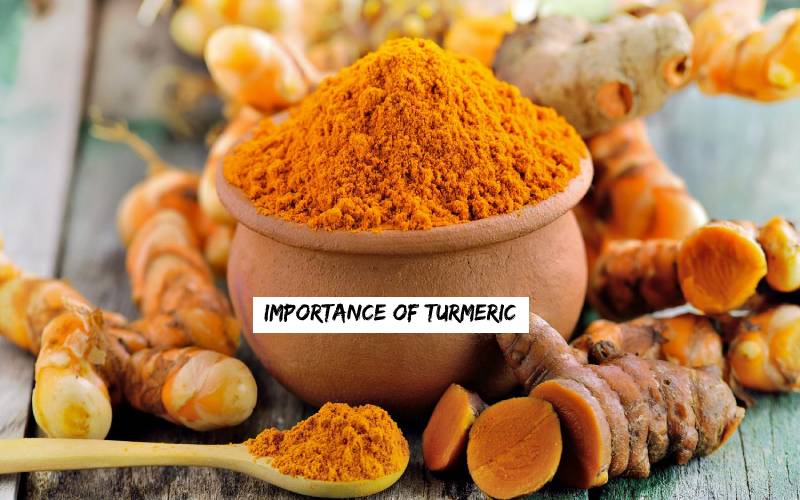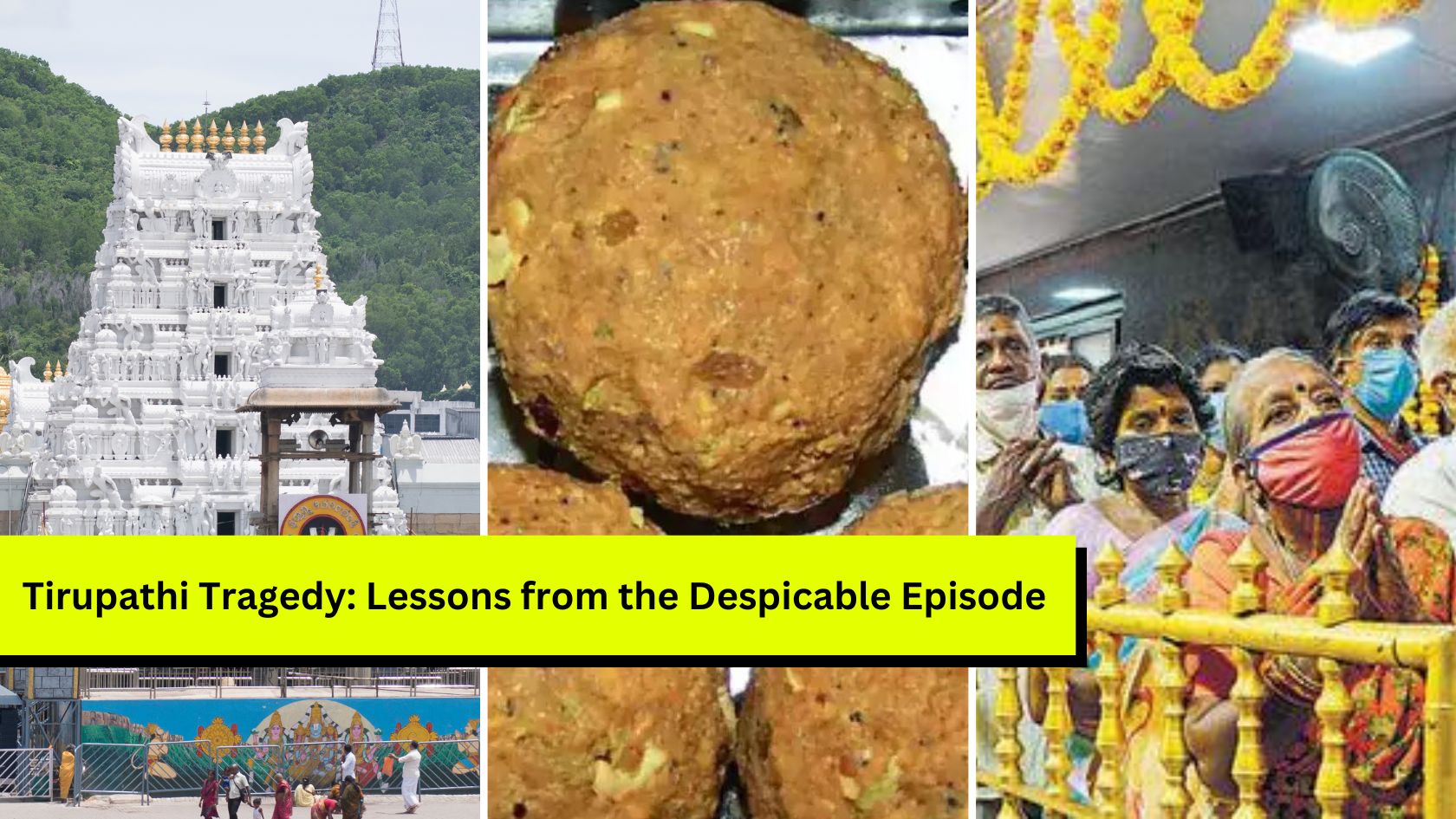
... Turmeric leaves are used to treat cold, fever, and other respiratory allergies in the coastal regions of India. They are even used with rice to prepare Patholi, a famous Goan recipe. Patholi are steamed rice rolls which contains a mixture of coconut, jaggery, cardamom, and a pinch of salt. The assorted rolls are steamed in fresh turmeric leaves which gives the cuisine its sweet fragrance. The patholi is especially prepared for Gauri and Ganesha festivals. Turmeric also becomes an inseparable part of any food cooked in parts of Indonesia, Malaysia, and Thailand.
The rhizome, turmeric, is known as Indian saffron. This is so called because turmeric acts as a cost-effective food colouring agent. The scientific name of turmeric is Curcuma Longa. There are innumerable health benefits and cultural significances hidden behind Manjal (Turmeric in Tamil). They are discussed in this article in an understandable manner.
Sanatana dharma places manjal at the top in the list of valuable herbs. One might have noticed any pundit pronouncing the word, “Haridra kunkuma,” during the time of sankalpa in any pooja. Haridra in Sanskrit refers to turmeric and kunkuma extracted from it is haridra kunkuma. All ceremonies include turmeric because of its auspiciousness. The manjal is not just considered a medicinal herb but is believed to be the representation of Goddess Lakshmi, Saraswathi, and Durga. In Tamil Nadu, manjal is worshipped by the womenfolk during the Pongal festival. It is an inextricable part of Indian foods and Tamil society.
While Manjal Neerattu Vizha (Turmeric-water bath festival) is celebrated as half-saree ceremony in Tamil Nadu, menfolk pour turmeric water upon themselves during temple festivals in the neighboring state of Kerala. Manjal is the golden plant of India. The festival of turmeric, Bhandara Haldi festival, is celebrated with immense joy in the small village of Jejuri situated in the western part of Maharashtra. During the festival, the Haldi (Turmeric) is thrown in the air and upon their families and friends with exceptional delight
It is interesting to note that turmeric is referred to by fifty-five synonyms in Vedic texts. All synonyms depict a propitious quality of the turmeric. Some of them are, Ranjani means radiant yellow colour, Mangala Prada is that which bestows luck, Krimighni means that which kills worms, Pavithra denotes holiness, Bhadra means auspiciousness, and Shobhana denotes brilliance.
Mixture of turmeric is used along with eight other ingredients in the ritual of arghya. This ritual involves washing the feet of revered sages, learned Brahmins, and devata-s who enter one's residence as guests. One can find reference to this pooja mentioned in the epic, ‘Ramayanam.’ Several Pauranic and Vedic texts imply turmeric as the herb of Lord Surya. Reference to four types of turmeric is found in one of the 14th century ayurvedic texts, ‘Bhavaprakasha Nighantu.’ They are Haridra (Turmeric), Vana Haridra (Wild Turmeric), Amara Haridra (Turmeric providing immortality), and Daru Haridra (Tree turmeric).
There is folk tale which expounds how the herb turmeric got its significance. Once there lived a beautiful girl named Kusumba Kohli in earth. Lord Narayana himself fell in love with the girl for her virtuousness. Not realising Kusumba is already married, Lord Narayana tried to meet her on a tryst. Adversity struck Him. Kaindhu Kohli, Kusumba’s husband, found out the plan and started to chase Him.
Narayana had to pick up his run as Kaindhu was a young and a sturdy man who chased Him equalling His speed. Narayana panted and had to soon find a hideaway to avoid being caught. So, He plunged behind an elephant-ears plant. No sooner Narayana began to shiver in fright, the plant trembled revealing his hideout. Kaindhu tried to pounce on Him but He made a narrow escape. In the meanwhile, Narayana cursed the plant, “You failed me dear elephant-ears plant, thenceforth may you grow only in the underground.”
Narayana sped to another hideaway behind a banana tree. The slender tree could not but reveal His majestic stature. So, He cursed the tree stating, “Oh dear plantain, may you bear fruits but once a year on a single stem.”
Again, He rushed by heels to hide behind some rocks. So that he could not be caught. Whatever Narayana did, He was only able to escape in split seconds from Kaindhu. This time there were few dogs snoozing behind the rocks and He caught their attention. They soon started barking at Him which sent clues to Kaindhu. So, He cursed, “Dear doggies, you are not all bad creatures, but you'll be chased by stones for the nuisance that you make.”
Thus, continuing His run, Narayana reached the nearby hills and found Kaindhu continuing to chase. So, He threw himself into a leafy patch of wild turmeric. The long leaves of turmeric covered Him completely and prevented Him from being caught. Unaware of the fact, Kaindhu went on searching inside the forest for the missing Narayana. Hence, Narayana blessed the plant, “Oh dear turmeric, you shall receive a place of honour at all auspicious events. May not any festival happen without your presence.”
Though the story may not be completely satisfying the intellect, let’s try to take the story for what it is and only observe the essence of it. This story is said to have been passed on for generations only through oral traditions in the rustics of Uttarakhand.
Its significance lies in the fact that before few decades in many parts of the country, turmeric, the all-auspiciousness symbolized, was used in the marriage ceremonies. A sacred yellow thread which held a manjal tied to it was used as Mangalsutra (Thaali in Tamil). It was tied around the neck of the bride by the bridegroom to confirm that both are married to each other according to Sanatana dharma. This practice still continues to exist in some rural places of the country.
The association of manjal with Uma, the goddess of fertility is particularly noteworthy. Turmeric is used in haldi ceremonies at Hindu weddings. It not only enhances the glow, but it also signifies the ritual purification of the newly married couple and serves as a blessing of fortune and prosperity. The fact that has been recently found out in science is that turmeric boosts fertility.
Is it possible to miss the skin benefits of turmeric? The ancient beautification product was wild turmeric or Kasturi manjal. It does not stain the skin but provides a glossy appearance and suits all types of skin. Kasturi manjal treats skin tanning, acne, oily skin, removes facial hair, and balances excess sebum production in the skin.
Turmeric has a high stand in the medical world. Curcumin is said to be natural anti-inflammatory compound. It can increase the antioxidant capacity of the body, helps in the formation of new neurons (Brain cells), and reduces the risk of getting a heart disease. Studies show that turmeric may help prevent cancer and may be useful in treating Alzheimer’s disease. It has been found out that arthritis patients respond well to curcumin supplements. They are also highly beneficial against depression, provides calming effects which dispels nervousness, and may help delay aging and fight age related diseases. Turmeric leaves are...

T. R. Surya is the special correspondent of the company. He is an eloquent speaker and compendious writer of English. An avid learner of Sanskrit and Indian scriptures under the guidance of Swami Ganeshaswarupananda and Gita Chaitanya of Arshavidyalaya. His inclination and interests are towards studying Metaphysics and philosophies.
NEXT ARTICLE

The Venkateshwara Swami Temple in Tirupati is among the holiest places in the world for Hindus. Millions of people throng the temple every year to get...

It is a sad reality that our Itihasa and Puranas have been subject to severe distortion over the years. This is not surprising considering how even th...

The holy land of Bharat follows Sanatana Dharma. The word Sanatana Dharma is a Sanskrit word meaning, “Eternal law”. It is the indestructible ultimate...